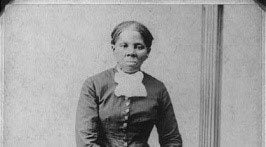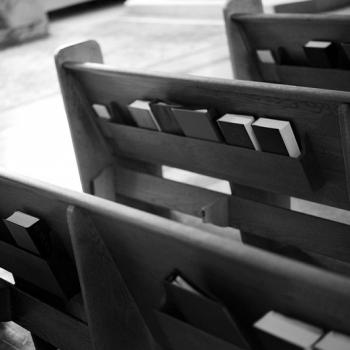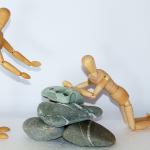
No doubt you’ve heard the good news: the fearless Harriet Tubman is going to be on the twenty dollar bill. Perhaps you’ve seen some of the many tweets going around lately, complaining that Harriet Tubman isn’t smiling or posing nicely in any of her portraits and will look ugly on the twenty dollar bill. There are also lighthearted memes poking fun at the new picture for the dollar, going around Facebook, and I confess I shared one of them myself. She has such a dour expression, so conducive to captions and thought bubbles. But it seems like some people are downright angry about the portrait. Never mind the racists who think she wasn’t a hero. I don’t know how to get through to racists. If you don’t want to understand that people owning people is wrong, I have nothing to say that will convince you. But there are people that seem very offended, not that Harriet Tubman is being honored, but that Harriet Tubman didn’t smile or try to look pretty for her portraits, or even that she was physically not very attractive in the first place. Some people are angry about this, and they don’t seem to see why they shouldn’t be. I wish I could say I was surprised.
Let’s just go ahead and say for a moment that Harriet Tubman was really very unattractive. Pretend there’s no issue with our standard Western template for what feminine beauty looks like, just for the sake of this post; we can sure talk about all the issues with that at a later date. Let’s pretend we all agree she was not pretty and talk about the ways in which this objection is still wrong. I would like to inform anyone who still doesn’t know that Harriet Tubman was a slave. She was compelled to work, for free, as a child, on threat of severe beating, and no matter what she did she was often beaten severely anyway. She had deep scars on her back. She wore three layers of clothing to lessen the pain of the blows. While working and being beaten she also had to care for her siblings because her mother worked in “the big house” and wasn’t allowed to care for her own children. Harriet worked setting traps in a marsh with an active case of the measles. She drove oxen and hauled logs. At the hands of an angry master, she suffered a traumatic brain injury; she was sent back out to work in the field with blood still dripping into her eyes. Finally, she managed to escape to Pennsylvania by traveling through the woods and marshes at night, and it would have been a heroic enough story if she had stopped there. But Harriet Tubman went back. She risked her life again and again, rescuing first her family and then dozens of slaves. When the Civil War broke out, she worked as a nurse tending men with smallpox and dysentery. Then she worked as a spy for the Union, and finally as the first woman to lead an armed assault in the Civil War, during which she rescued 750 slaves in one day. After the civil war, she continued her activism, this time as a suffragette. And yes, this national hero– this genuine war hero who saved thousands from lives of dehumanizing agony– was plain, and didn’t know how to pose for a picture.
There is an adage, often mis-ascribed to Ginger Rogers herself but actually coined in a 1982 Frank and Ernest cartoon, that Ginger Rogers did everything that Fred Astaire did only backwards and in heels. We laugh at this, but I’ve often found it to be a depressingly accurate expectation of women. This is, in so many ways, a man’s world, and we are to navigate it dancing backward and in heels. We are to do things that men do, without missing a step, and not innovate too much or we’ll look as though we’re a silly woman doing them wrong; however, we are also criticized for doing them wrong if we do them too well, too much like a man would do, and commit the faux pas of being masculine. It’s not enough to dance; you have to dance backwards or you’re dancing like a man. And while we imitate all of men’s dance steps backwards, we’re still wrong in the eyes of the world if we don’t do so in heels– that is, prettily, with aesthetic grace and never mind that it’s inconvenient or painful to do it that way. High heels lengthen the leg and create a pretty sway in the back; they also hurt, and will break your ankle if you don’t watch your step. Conforming to a certain standard of beauty makes you sexually attractive and lovely in the eyes of the world, but it hurts. Doing what a man would do, moderately well, while not being masculine and meeting that standard of beauty, stands a good chance of making you rich and highly praised by all the right people. But it hurts. And it might mean that you never do what was yours to do, excellently, and become beautiful in the eyes of God. It might not come to that, but it may.
Saints and heroes are rarely praised by all the right people, and female saints least of all. The Trojan Horse looked like an unmanful surrender, or it wouldn’t have worked. David exposed himself to taunts and ridicule when he went to slay Goliath in the only way a shepherd boy could slay a giant. He would have failed if he’d tried to look good doing it. Queen Esther did look beautiful while she pleaded for her people, and that was important to her task– but what she did was a calculated act of provocation, not the act of a socially acceptable Persian wife at all. She was in her heels, dancing, but not backward. Saint Catherine cut her hair off and scalded her skin, to avoid being made into a trophy wife when she had the Lord’s work to do; she sucked the wounds of lepers and counseled priests. Her family tried to enslave her for it, and the Dominicans put her on trial for heresy. She danced, forward, not in heels, and it cost her a great deal of suffering. Harriet Tubman couldn’t afford heels. She was too injured to dance. She plodded, forward and backward across the border, against men, against literal armies, against all social convention, in order to save others from the agony she had suffered. Now she’s going to be on US currency alongside a revolutionary war general and the very president she criticized for not acting decisively enough to end slavery, the Commander and Chief of the Union army for which she led a raid that saved seven hundred fifty slaves. And her portrait is going to be every bit as unattractive as Lincoln’s. But her lack of prettiness is offensive to some in a way that Lincoln’s isn’t.
Those who have been reading my blog know that I’m deeply in love with aesthetics. Beauty– aesthetic beauty, just that pure surface loveliness that’s pleasing to behold, leaving aside the beauty of the heart for a moment– physical beauty inspires us. The physical beauty of an elegant and modelly-looking woman is a good thing. Women who like to wear heels, and can dance backward in them without tripping, are not doing anything wrong. As far as it goes it’s a kind of virtue, an excellence. Women who do whatever is theirs to do and manage to do it while looking pleasant are doing a nice thing. But all good created things are only good insofar as they participate in God, and placing any good thing before the will of God is sin. If dancing backwards and in heels is your vocation, you should do it and we should all praise you. But often, God calls us to take off our heels and tread on holy soil until our feet are calloused and unattractive. Harriet Tubman was a devout Christian; she was illiterate, but she but learned about the Bible from her mother’s stories. She believed that God was calling her to do what she did, and she did it with unimaginable courage. If a man did just that, his picture might end up on the money and most people would be pleased. If a woman does it, society demands that she also smile and look pretty. But Harriet Tubman did not care much for social convention in her own life, and continued on doing the will of God. I pray that we all will do the same.
(Image courtesy of totallyfreeimages.com)

















